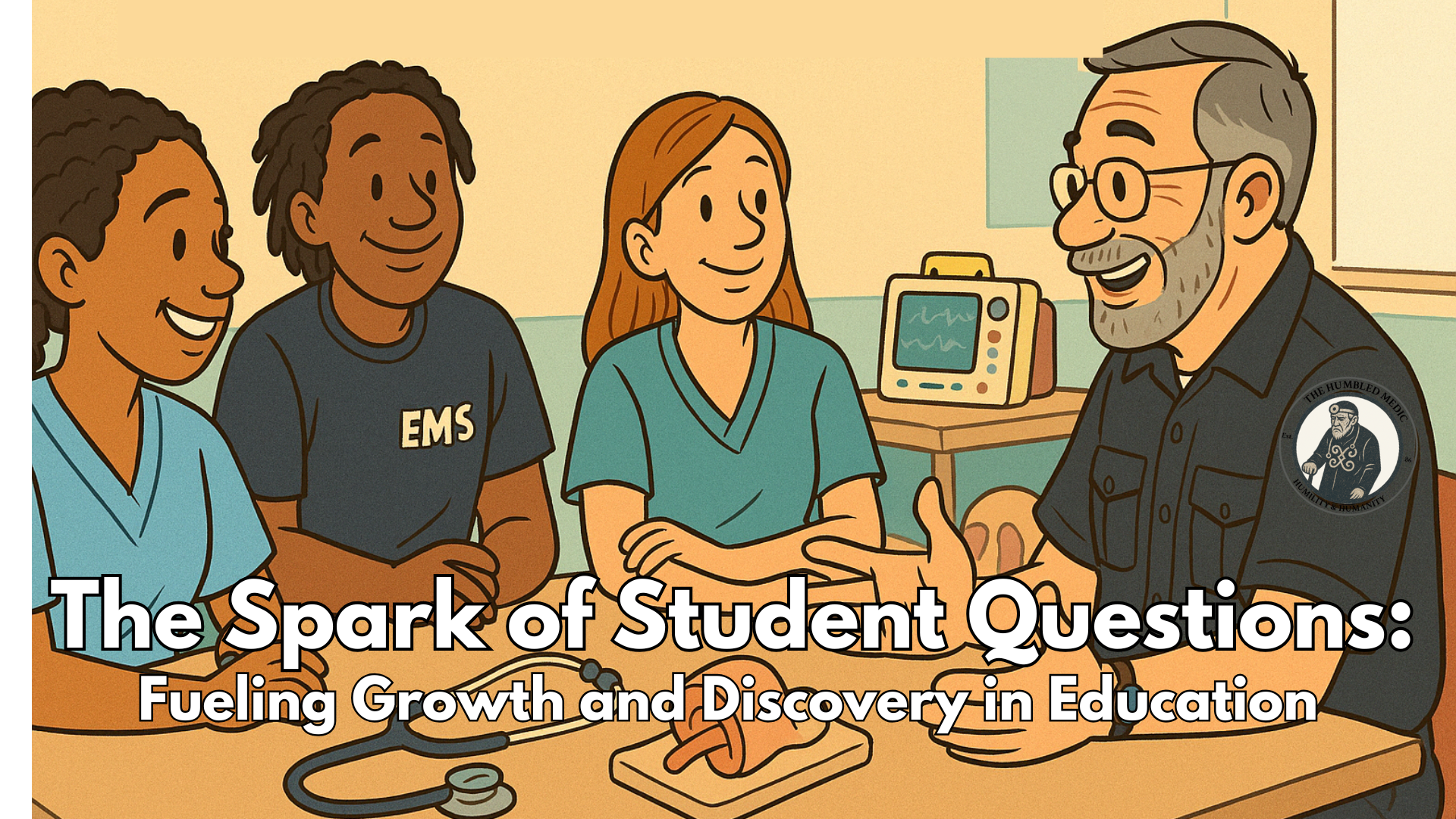As a paramedic with years of calls behind me and now a classroom full of eager faces in front of me, I’ve come to realize something powerful: my students, with their endless curiosity, are often the ones keeping me sharp. Their questions—sometimes simple, sometimes wildly profound—have a way of nudging me toward new ideas, forcing me to revisit old ones, and reminding me why I love this work. Teaching EMS and nursing students isn’t just about passing on what I know; it’s about letting their spark reignite my own.
I’ve been on enough runs to know that the job doesn’t always give you time to pause and reflect. You’re moving from one call to the next, making split-second decisions, trusting your training and your gut. But in the classroom, it’s different. When a student raises their hand and asks something like, “Why do we still do it this way?” or “What happens if the patient doesn’t respond like the textbook says?” it stops me in my tracks. Not because I don’t have an answer—sometimes I do—but because their question often dances around a bigger issue, one I’ve wrestled with before and maybe set aside too soon.
I remember one student last semester who asked about managing a difficult airway in the field when all your usual tools fail. It wasn’t a new question, but the way she asked it, with this mix of frustration and determination, made me think harder. I’d faced that scenario myself years ago, and yeah, I’d figured out a workaround, but had I really dug into why it was such a persistent problem? Her question sent me down a rabbit hole—reading new studies, talking to colleagues, even reaching out to a respiratory therapist friend. Before I knew it, I was piecing together a better way to teach that skill, one that went beyond the textbook and got to the messy reality of fieldwork.
That’s the thing about students: they don’t always see the full scope of what they’re asking, but they’re standing close enough to the problem to point at it. It’s like they’re shining a flashlight into corners I’ve walked past too many times. I might be the one with the experience, but they’re the ones reminding me to slow down and look again. And honestly, that’s a gift. It’s easy to get comfortable, to lean on what’s worked for years and call it good. But when a student asks a question that makes you pause, it’s a chance to grow—not just for them, but for you.
Teaching keeps me honest, too. I can’t just coast on stories from the ambulance or lean on protocols I learned a decade ago. When a student asks, “What’s the evidence behind this?” I’ve got to have something real to say. And if I don’t, it’s on me to go find out. That push has led me to new research, better techniques, and sometimes a humbling realization that what I thought was “best practice” could use an update. It’s not always comfortable, but it’s necessary. EMS and nursing are fields that never stand still—new tools, new studies, new challenges are always coming. If I’m not learning, I’m not teaching; I’m just reciting.
There’s another side to this, too, something deeper. The students’ questions don’t just spark new ideas—they keep me connected to why I started in this field. When they ask about the tough calls, the ones that stick with you, or when they wonder how to talk to a family after a bad outcome, it takes me back. Those questions aren’t just academic; they’re human. They remind me of the weight we carry as providers and the privilege of being there when people need us most. Answering those questions forces me to dig into my own experiences, to share not just the “how” but the “why” of what we do. It keeps my heart in the game.
I’ll be honest: I don’t always have the answers. Sometimes a student will ask something so out of left field that I’m stumped. And you know what? That’s okay. I’ve learned to say, “I don’t know, but let’s figure it out together.” That’s when the real magic happens—when we start chasing the answer as a team. It’s messy, it’s humbling, and it’s where some of the best learning happens, for them and for me.
So, to my fellow educators out there, whether you’re teaching paramedics, nurses, or anyone else in this wild world of emergency medicine, let me say this: lean into your students’ questions. Don’t just answer them—let them challenge you. Let them pull you back to the problems you’ve shelved, the ideas you’ve half-formed, the practices you’ve taken for granted. Those questions are more than just teachable moments; they’re the fuel that keeps us growing, keeps us curious, and keeps us connected to the work we love. In a field that demands so much, that spark is what keeps life going—for us, and for those we teach.

